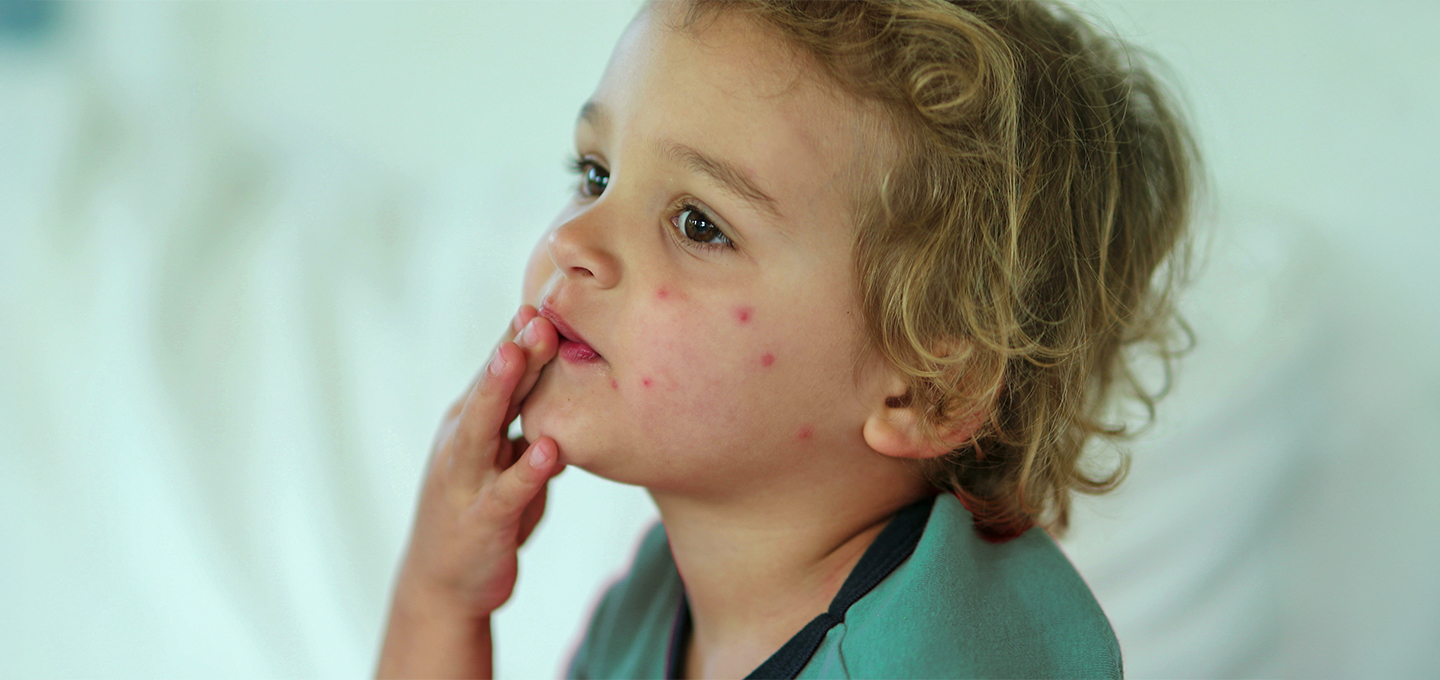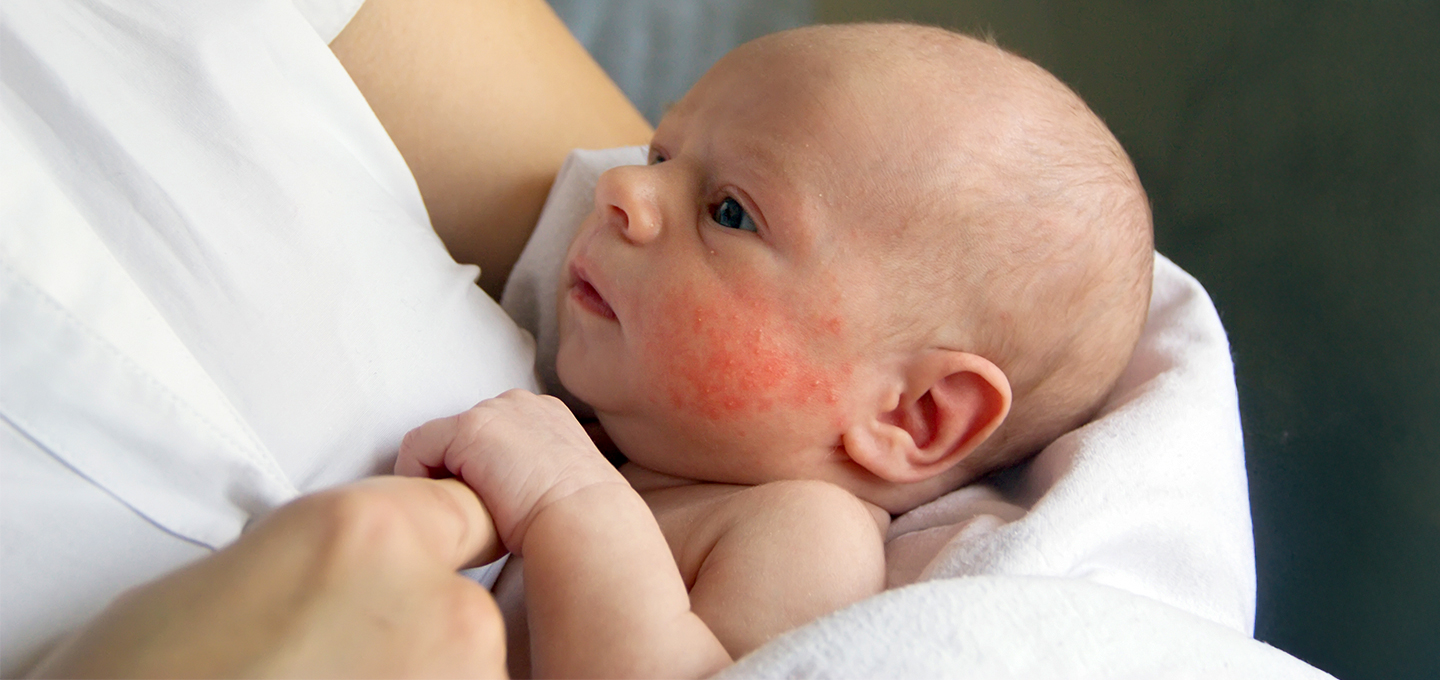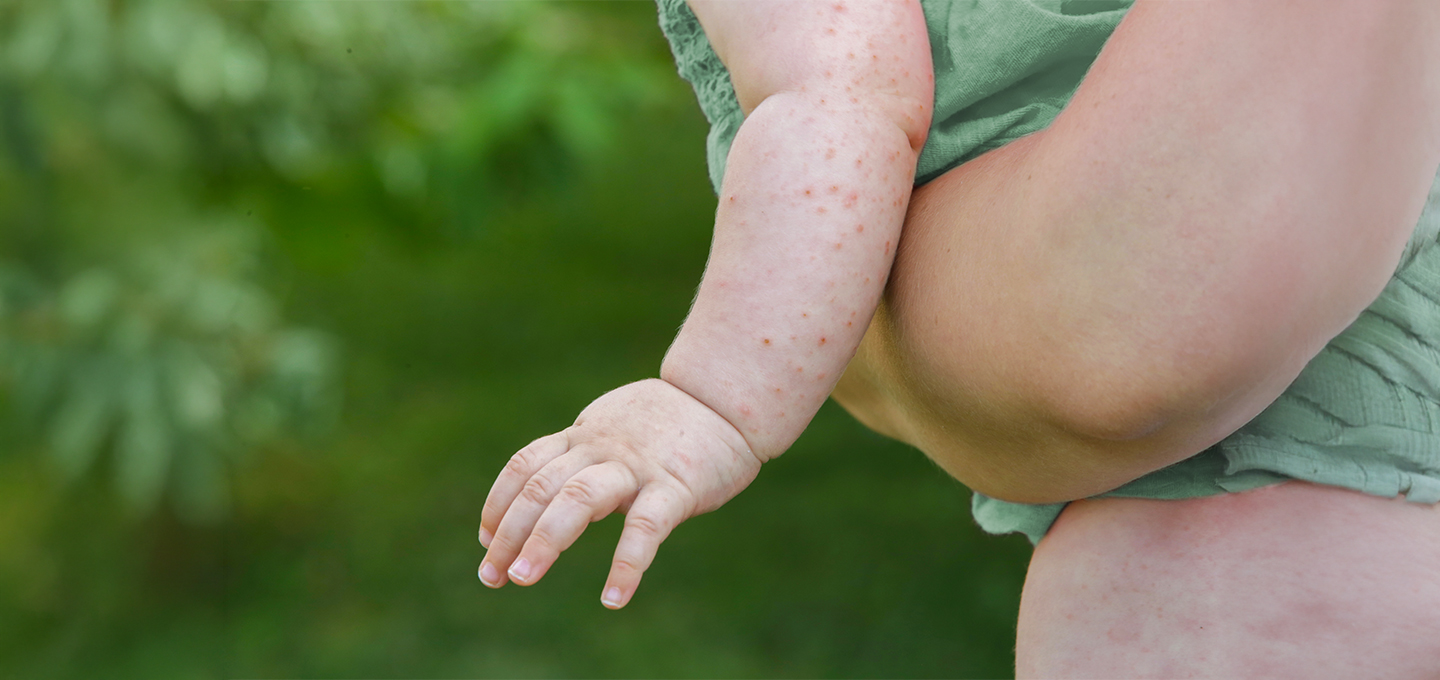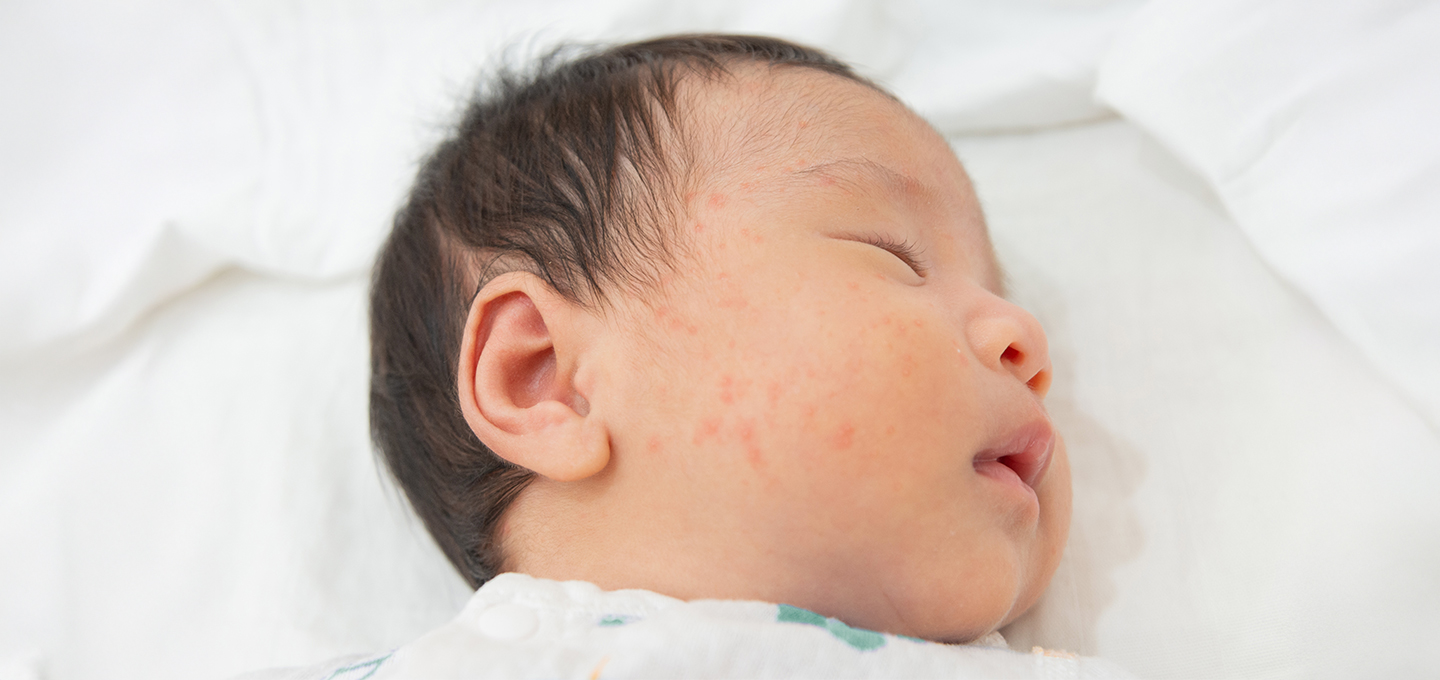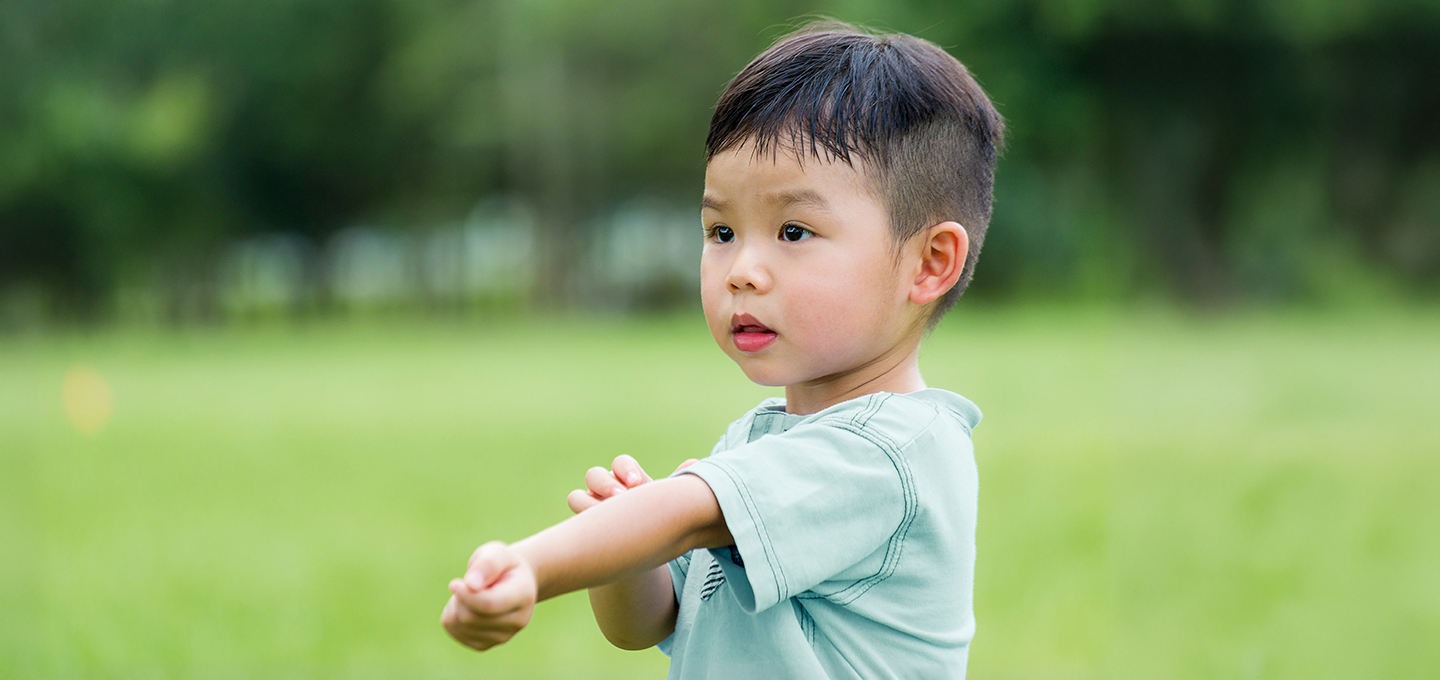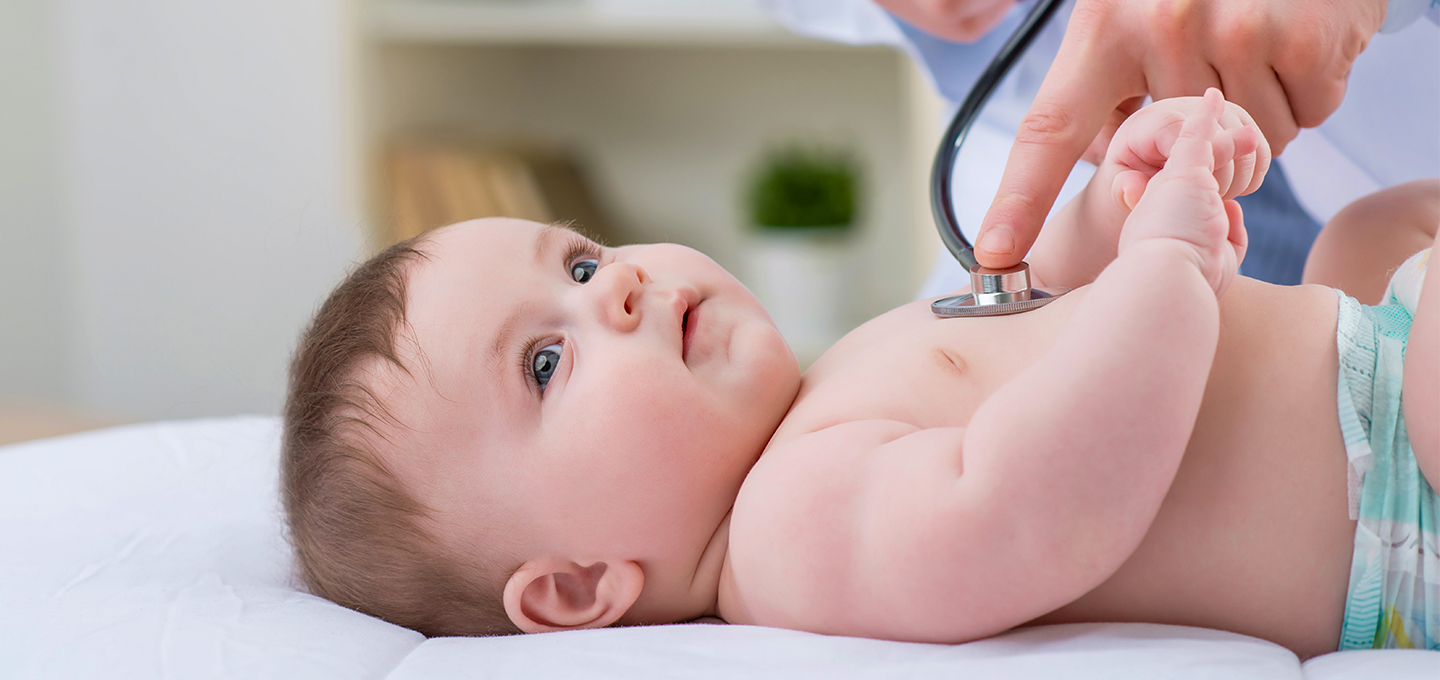
What Is Roseola?


Roseola is a common and generally mild viral infection that typically affects babies and toddlers. It’s sometimes called sixth disease, exanthem subitum, or roseola infantum, and it’s usually not something you need to worry too much about because it typically resolves by itself within a week or so. Roseola typically causes a few days of fever, after which a skin rash often appears, but in mild cases, you may not notice any symptoms at all. Some of the symptoms, like the fever, may require at-home treatment so that your child feels more comfortable. Read on to find out more about the roseola virus, learn the signs and symptoms, and for information on when to contact your baby’s healthcare provider.
What Is Roseola?
Roseola is a viral infection caused by two common strains of the human herpes virus. Children between 6 months and 2 years old have the highest risk of contracting roseola, and the most common age for contracting roseola is between 6 and 15 months. Infants are immune to roseola for the first few months of life if mom has had roseola as a child because of the antibodies they’ve received from their moms while in the womb.
One bout of roseola in childhood usually provides immunity, so they’re unlikely to catch it again; but a repeat case may occur if your child has an immune disorder. It’s good to know that if your child comes down with roseola, it’s likely that they’ll be back to normal within a week or so.
Is Roseola Contagious?
Roseola is contagious and is spread through contact with an infected person’s saliva, like when they sneeze or cough. So, when is roseola contagious? It’s usually contagious up until your baby is fever free for 24 hours and the rash appears. If your child hasn’t had a fever in 24 hours but still has some rash, it’s likely they’re no longer contagious and may safely return to daycare or preschool. If you’re unsure whether your little one is still contagious, it’s best to consult your healthcare provider.
Is Roseola Itchy?
No, roseola is generally not itchy. Even the rash that appears usually doesn’t cause any itching or pain. If your little one is itchy, it’s best to check with their healthcare provider in case the rash is caused by something other than roseola.
Roseola Incubation Period?
The incubation period for roseola (the time it takes for symptoms to develop after a person is infected) is generally 5 to 15 days.
What Causes Roseola?
Roseola is caused by exposure to a virus, which is commonly the human herpes virus 6 or 7.
Your child can contract roseola from an infected individual through respiratory secretions or saliva from:
Roseola Virus Symptoms
It can take between 5 and 15 days for the visible signs of roseola to appear after the initial point of infection.
Symptoms of roseola can include:
Roseola Treatment
In most cases, roseola will go away within a week and not require any professional medical treatment. While your child has a fever, keep them comfortable by dressing them in lightweight clothing. Make sure they get lots of rest and plenty of fluids. There is also no treatment for the roseola rash as it doesn’t cause any pain or itching and will usually go away on its own within a few days.
Roseola Medication
To treat your baby’s fever, your healthcare provider may suggest giving them acetaminophen or ibuprofen (with the correct dose for their age and weight). Do not give your child aspirin, as it may lead to a serious condition called Reye’s syndrome. If your baby has a weakened immune system, their healthcare provider may prescribe an antiviral medication.
Roseola Vaccine
There’s no vaccination for roseola.
What Does Roseola Look Like?
Since roseola symptoms are very similar to many other common childhood illnesses, roseola may be difficult for your child’s healthcare provider to diagnose at first. Your baby’s healthcare provider may wait and see if the roseola rash appears once the fever goes away, particularly if all other conditions such as the common cold, ear infection, and strep throat have been ruled out, to help make a diagnosis.
Here’s how to spot the difference between roseola rash and a few other common childhood illnesses.
Chickenpox Vs Roseola
Chickenpox and roseola are both viral infections common in children, but they’re caused by different viruses and have distinct symptoms. Chickenpox typically presents with an itchy, blister-like rash that starts on the face and trunk before spreading, along with fever and malaise. Roseola usually begins with a sudden high fever that lasts for several days, followed by a rash that starts on the trunk and spreads to the limbs when the fever subsides. Unlike chickenpox, the roseola rash is not itchy and the illness is generally milder.
Roseola Vs Rubella
Roseola and rubella are both viral infections that affect children, but they differ in their symptoms. Rubella, also known as German measles and caused by the rubella virus, usually starts with mild fever and symptoms like runny nose and swollen lymph nodes, followed by a fine, pink rash that begins on the face and spreads downward. The rubella rash can merge to form uniformly colored patches and usually lasts about three days. It may be harder to see on darker skin tones, but you may notice the skin is rough or bumpy.
Roseola Vs Measles Rash
Although both are caused by a virus, the measles and roseola rashes differ in appearance. The measles rash looks like a red/reddish-brown, blotchy rash that usually starts on the face, particularly at the hairline, and then spreads downward to the rest of the body. The rash tends to merge and can be itchy. You may even notice small, raised white spots on top of the rash. Unlike the roseola rash, measles may also cause flaky or peeling skin. Measles is generally more severe than roseola, so it’s important to contact your healthcare provider immediately if you suspect your child has measles. Check out our article to discover more about some common rashes in babies.
How Long Does Roseola Rash Last?
The fever associated with roseola can last between three and five days. Once the fever is over, a rash may develop and then fade within two to four days.
Can Roseola Be Prevented?
To help prevent your child from getting roseola, keep them away from anyone who is infected or has a fever. If your child has come in contact with someone who has it, watch for signs of the virus. If your child has roseola, keep them away from other children to prevent spreading the disease. This may mean keeping them home from daycare or school. If someone in your household has roseola, ensure that everyone practices frequent hand-washing so it doesn’t spread.
When Should You Consult Your Baby’s Healthcare Provider?
Roseola usually goes away on its own, but consult your child’s healthcare provider if your child:
If the fever lasts, and/or your child has worsening symptoms (such as the ones listed above), your child’s provider may order a blood count, urine analysis, or another test to check for roseola.
The Bottom Line
Roseola is generally not a cause for concern. It’s a common illness in children, and your child will likely recover from roseola with time. Allow your child to rest up and take it easy and contact your healthcare provider if you have any questions or concerns. Although it’s never pleasant to be sick, many children will catch roseola before they enter kindergarten. With medical treatment or a little at-home TLC, your little one will be back to normal soon enough.
Did you know that you could be earning rewards for the diapers you buy? Download the Pampers Rewards app today, scan all your diaper codes, watch the Pampers Cash grow, and redeem for Pampers diapers savings at one of your favorite retailers.
Read more about Baby
Related Articles
Join a World of Support
through Pregnancy and Parenthood.
TRACK WITH TOOLS
LEARN WITH EXPERTS
GET REWARDED

